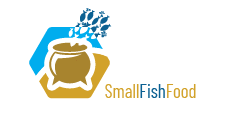Globally our terrestrial and aquatic environments produce equal amounts of organic matter, but we only harvest 3% of our food from marine and freshwaters. Fish represent by far our biggest source of harvestable protein, and of all food production systems, capture fisheries are the most energy efficient and have the lowest environmental impact in terms of greenhouse gases and use of freshwater, fertilizers or pesticides. Moreover, the unique nutrient content of fish plays a significant role in combating the triple burden of hunger, micronutrient deficiencies and non-communicable diseases. These qualities of fish are not recognized in the global food security discourse, and fish is strikingly missing from strategies for nutrient deficiency reduction. Yet, increased fish consumption is affected by inequalities in access and an inappropriate policy and management focus on large, high-value, fish rather than small fish.
Small indigenous fish species (SIS), although more abundant and productive, are viewed as a low-value commodity that is largely reduced to fishmeal and oil, and used in animal feed. In addition, social, economic and legal barriers often inhibit livelihoods of small-scale fishers targeting small fish, which limit their food and income security. Capture fisheries are an important economic subsistence activity all over Africa that support 200 million Africans directly or indirectly through food and income. Many African fisheries are increasingly reliant on the capture of SIS, that often are processed, dried or smoked, with simple methods and then packaged, transported and sold to consumers at large distances away from their production source. As SIS are often consumed whole, they are an important source of micro-nutrients for many Africans.
Technical, institutional and socio-cultural transitions are required to achieve sustainable development goals (SDGs). Fisheries are almost invisible in strategies to achieve SDG2 and nutrition and food security are not the primary focus in SDG14, which also does not mention freshwater resources that play a dominant role in African fisheries. Following a value chain (food system) approach, the Small Fish for Food project conceptualises advantages of SIS utilisation as well as highlights barriers and societal consequences of a constrained access to this important food resource. With that approach the Small Fish for Food project addresses SDG2 (Zero hunger), which aims to achieve food security and promote sustainable agriculture, and SDG14 (Life below water), promoting the conservation and sustainable use of marine resources.

